


Want to develop a language learning app but don’t know where to start? In this guide, we’ll assist you from start to finish: inventing, finalizing, developing, and finally releasing your app to people. No matter if you want to design the next edtech masterpiece or just explore how apps like Duolingo are put together, following these steps will show you how to go from idea to app.
%20(1).avif)
Basically, language learning apps are one of the types of eLearning apps, having all the benefits these apps possess but specializing particularly in language learning. They allow users to learn a new language at their own pace, with interactive lessons and progress tracking, online and offline.
Here, we gathered some reasons why people love language learning apps and why they continue to be in high demand on the app markets.
Given these perks, it’s unsurprising why language learners tend to flock towards Duolingo and other similar applications.
Interest in online language learning has increased greatly in recent years, especially due to COVID-19. This resulted in a drastic increase in the users of language learning apps. The majority of the platforms offered free or discounted language learning resources during this period, and many of the trial users later converted to paying customers, forming long-term usage patterns.
The rise of language learning apps wasn’t just a temporary spike during the pandemic — it’s a lasting trend. The chart below reflects a strong and steady interest in language learning, and that interest translates directly into market growth. In 2023 alone, the online language learning market was valued at over $1 billion, showing that users aren’t just downloading apps — they’re actively investing in them. All this data proves that language learning is a thriving, global industry with long-term potential.
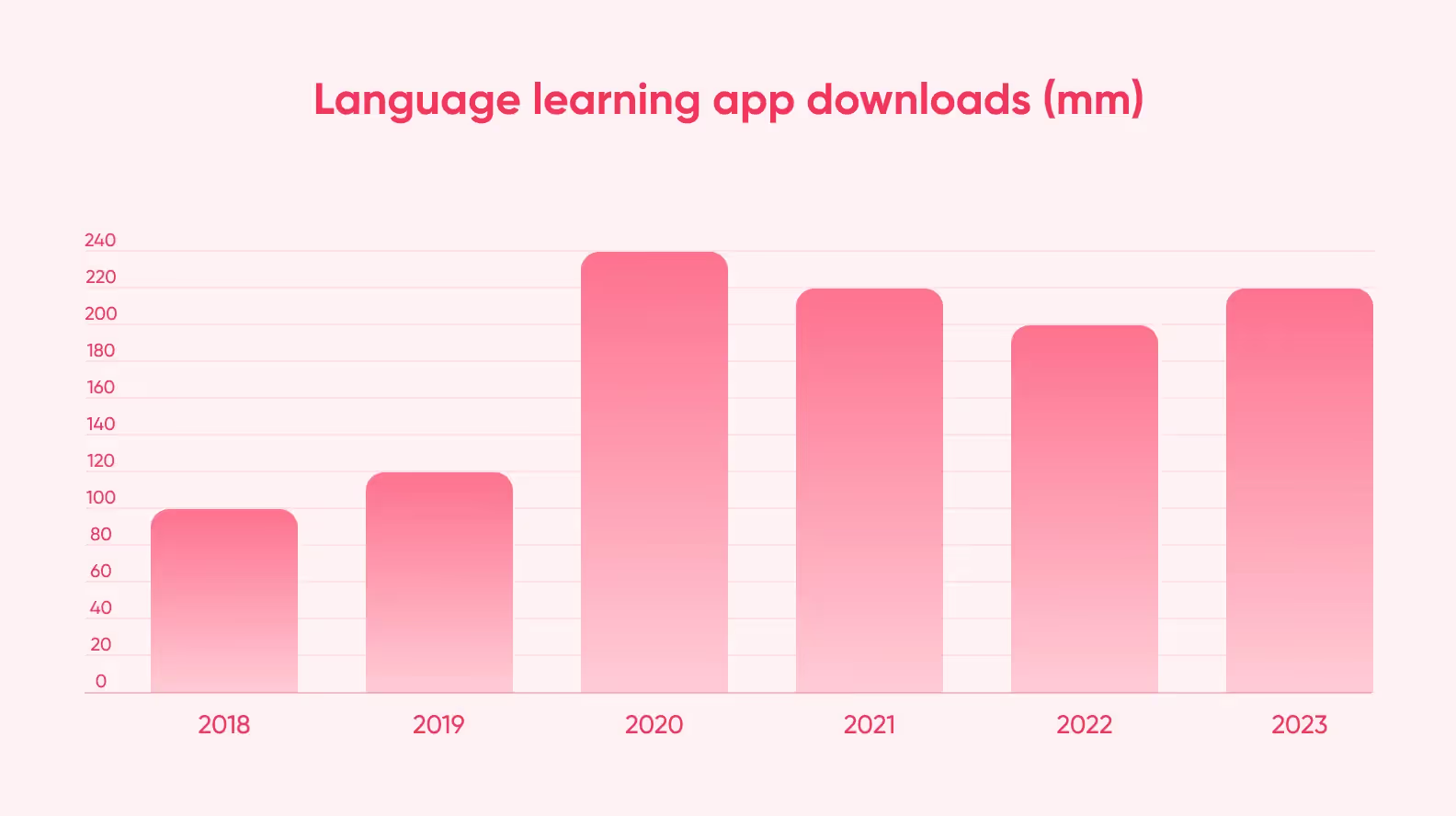
You don’t start a successful language learning app development with coding or design. A clear and well-defined concept should always come beforehand.
Roughly speaking, a concept is like a blueprint for your entire project. It provides your app development process with a clear direction, ensuring that the final product is both engaging and competitive in the market. With it, you always keep in mind the experience you aim to deliver, ensuring that everyone who works on your app is moving toward the same vision.
To create a seamless user experience, it's important to consider both functional and visual aspects while defining your app concept.
Functional aspects are the key features that will drive language acquisition. Is your language learning app mainly about practice with vocabulary words, conversation skills, grammar points, or all three? Which features, such as quizzes, voice recognition, or game-like challenges, will you provide to interest your users?
Visual aspects are all about how your design looks and feels. This includes making sure the navigation is easy to use, with clear menus and buttons, and readable colors and fonts. It’s also about things like icons, pictures, and animations that can make the learning process more fun and interesting.
Here are some questions that’ll help you define your own language learning app concept:
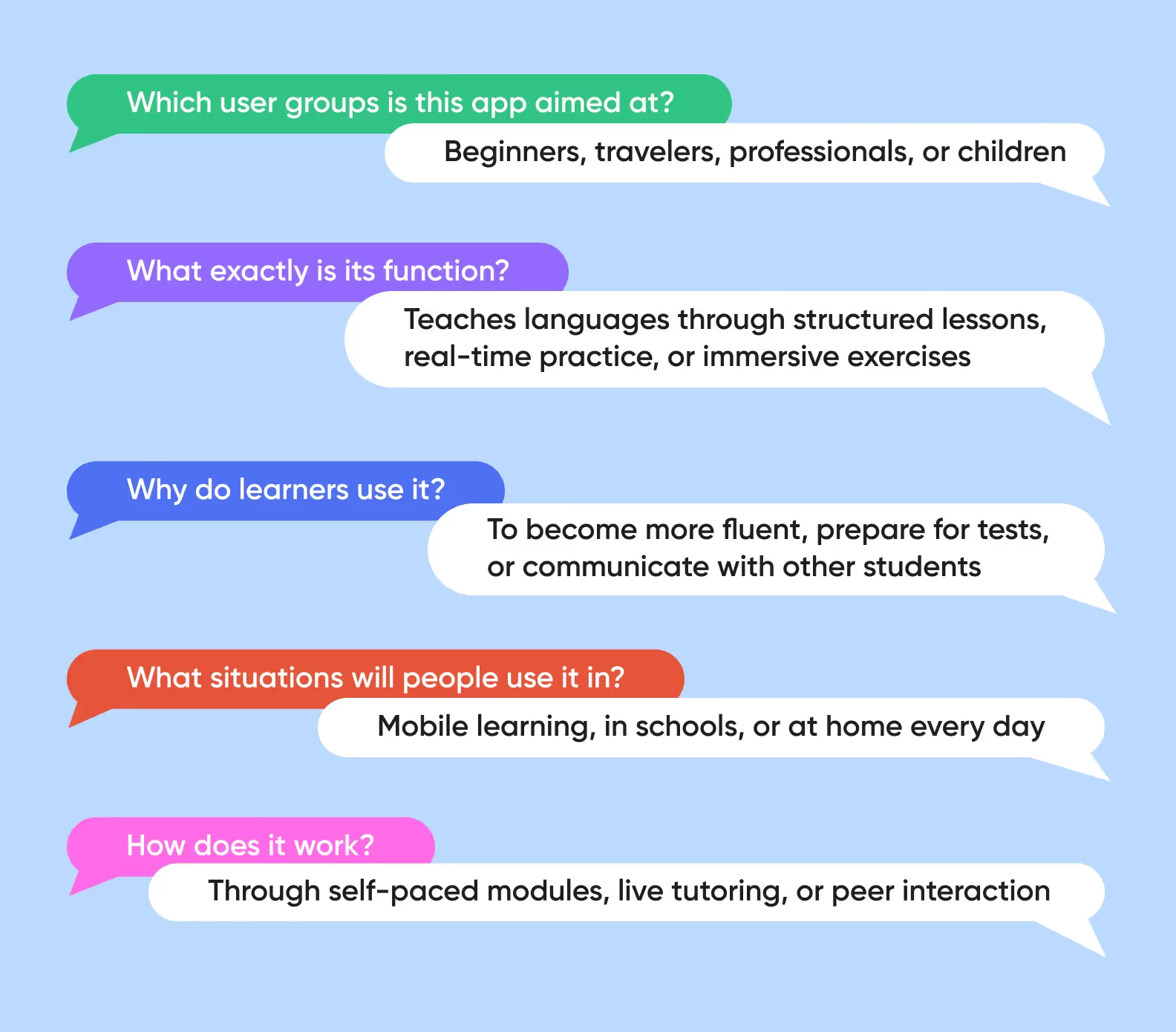
Duolingo did this well, since they aimed to transform language learning into an enjoyable, game-like experience. Functionally, they built their app around bite-sized lessons organized in skill trees, with immediate corrections and progress tracking. Visually, they use playful illustrations, a memorable owl mascot, and celebratory animations that turn the learning process into an engaging experience.
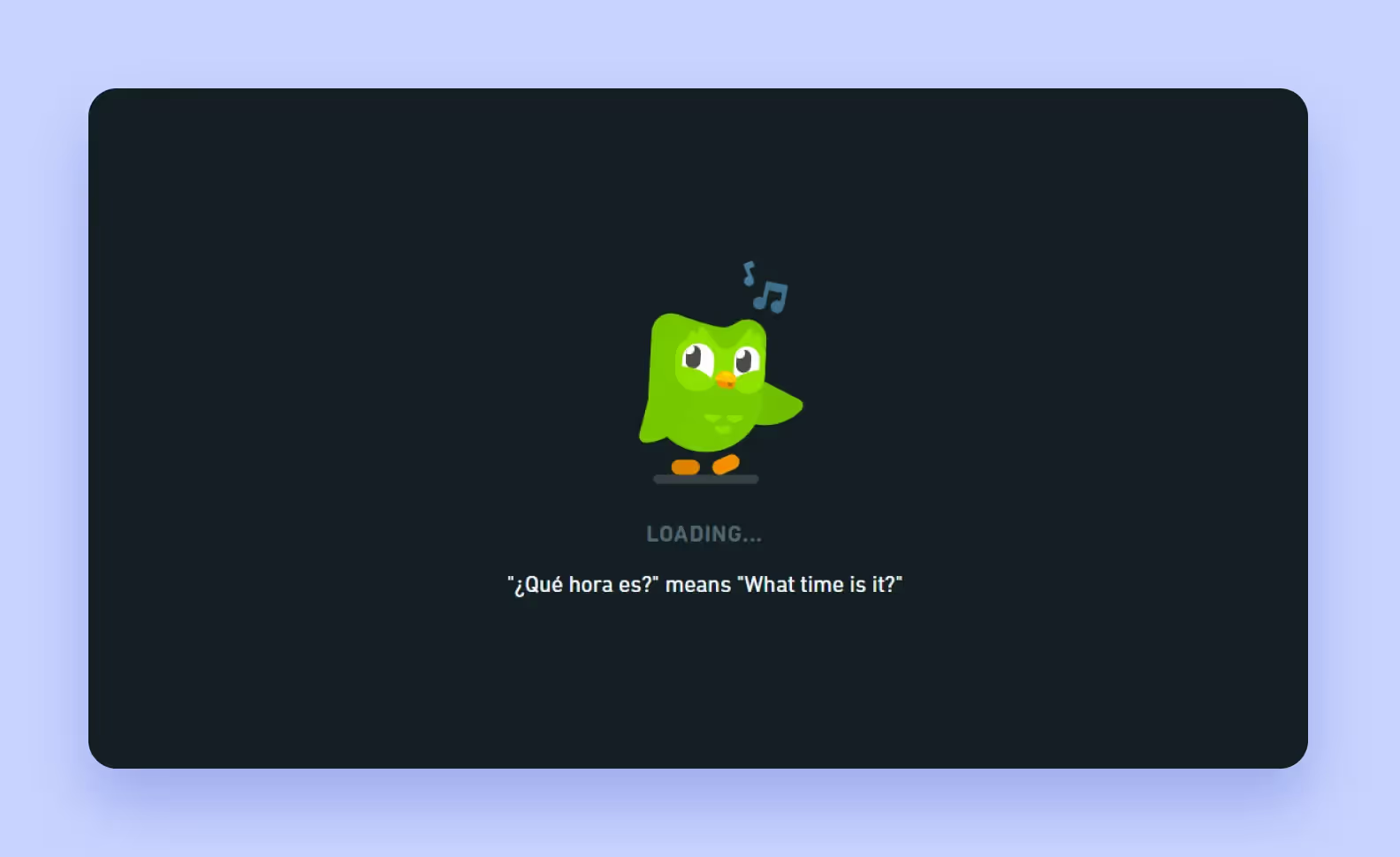
This example shows that once you clearly define something, it’ll lead your development efforts. The additional features of Duolingo were made to match its basic idea of making learning languages entertaining and open to all. Clear thinking about their concept took care of both user and technical decisions, which made their current achievements possible.
Language learning apps are most successful when education and fun are well-balanced. Top mobile apps not only instruct, but also keep users engaged and wanting to come back time and again. Here are the key points that make this work, along with some real cases of apps that utilize them skillfully.
The main goal of a good language learning app is to show information in a clear way.
Instead of giving users long lists of random words, the app should organize learning by topics — for example, using themes like "Food & Dining" instead of just "Vocabulary." It should also slowly increase the level of difficulty as the user learns more, helping them grow step by step. Using different types of exercises also helps people learn in fun and varied ways.
This kind of structure makes learning easier and helps users keep moving forward.
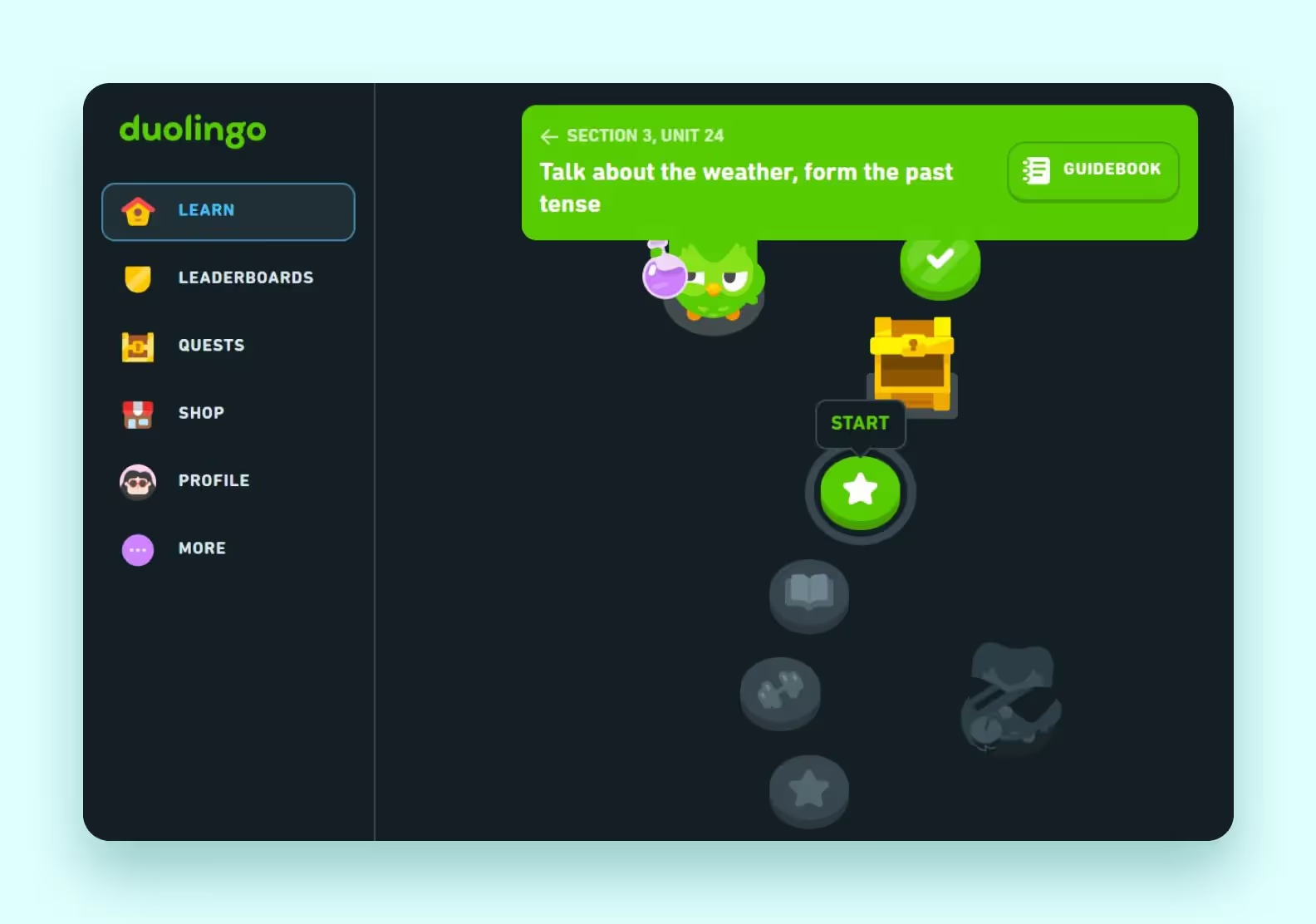
People find gamification very motivating because of the psychology behind it.
Streaks, for example, are powerful tools — once we start building a streak, we don’t want to break it, which keeps us coming back every day. Earning XP points is also motivating because it shows us how much progress we’ve made and gives a sense of achievement. Leaderboards add a fun, competitive element by showing how we compare to others, which can push us to keep learning and improve our ranking.
All of these features work together to keep users engaged and motivated.
A good tip is that gamification should blend in, instead of standing out separately.
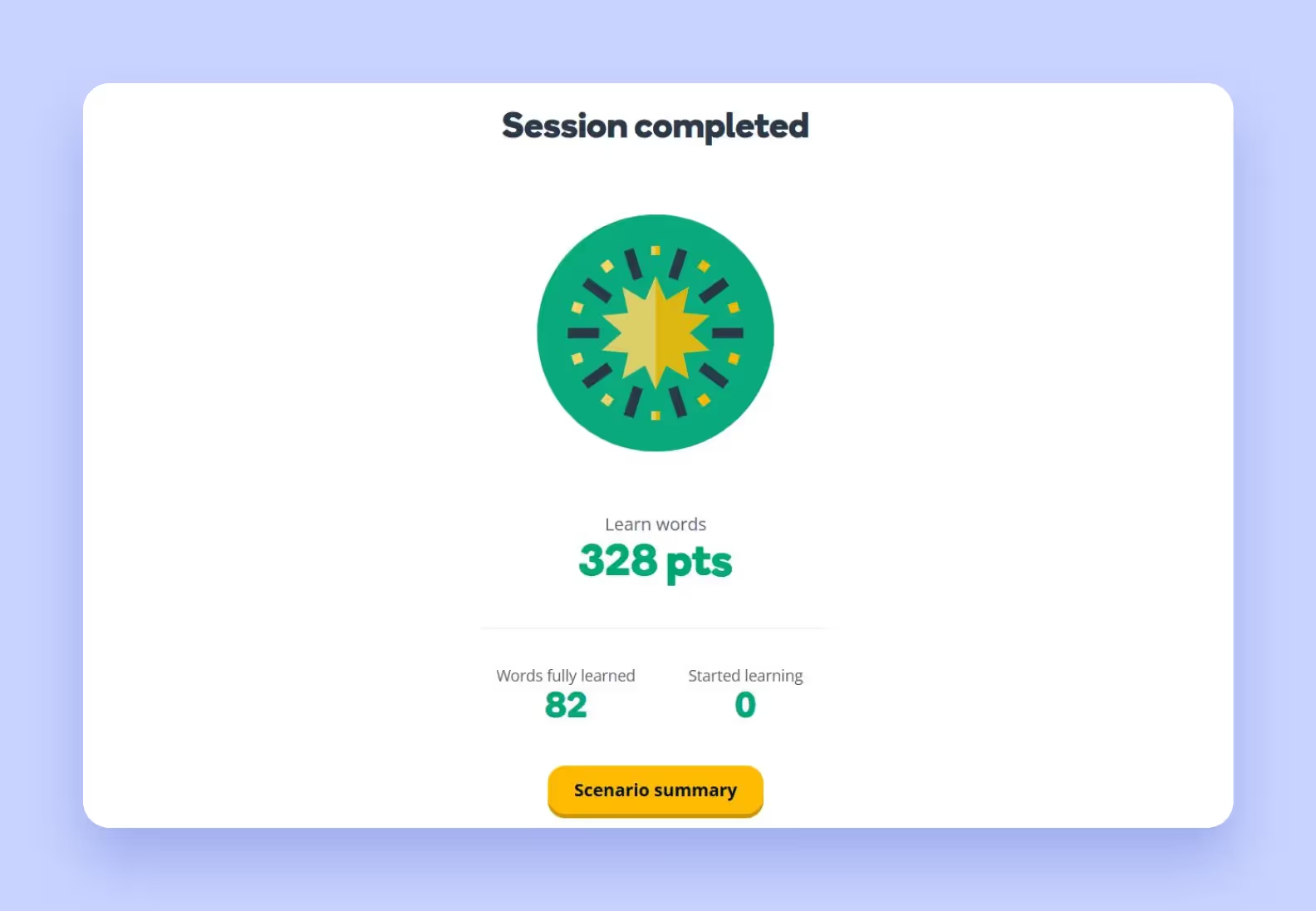
People feel motivated when they can see their progress over time. A good tracking system helps with this by showing clear signs of improvement.
For example, it can track how many days someone has learned in a row or how many words they’ve mastered. Visual markers, like progress bars or skill meters, also make progress easy to see at a glance. Regular updates, such as weekly totals or signs of personal growth, give users a sense of achievement.
When people see their efforts paying off, they feel encouraged to keep going. It’s the difference between feeling stuck and knowing you’re actually moving forward.
<div class="post_divider"></div>
⭐Our experience
For your reference, see how we realized progress tracking for an online learning platform, Zeroney. Detailed reward icons, a progress bar, and a rating motivate students to continue their learning.

<div class="post_divider"></div>
Today’s learners want lessons that fit their personal needs. This means the app should know what they already understand so they don’t waste time on things they’ve already learned. It should also take into account why they’re learning — whether it’s for travel, work, or school.
Everyone learns at their own speed and in their own way, so it’s important that the lessons match how fast they learn and how they like to study.

When learning feels right for each person, it becomes easier and more enjoyable.
Social connections are important because they help learners stay motivated.
Good language learning apps let people do activities together, like team tasks or friend challenges. They also have leaderboards where you can compete with friends, making learning more fun. Plus, learners can get help and support from others in groups or forums.

Apps that incorporate social features are more popular over time because learning is made better with companionship rather than in solitude.
Today’s learners want to study anytime and anywhere — whether it’s during a commute, at home on a laptop, or before bed on a tablet. Because of this, top app makers design their products to work smoothly across all devices, allowing users to switch between phones, laptops, and tablets without interruptions.
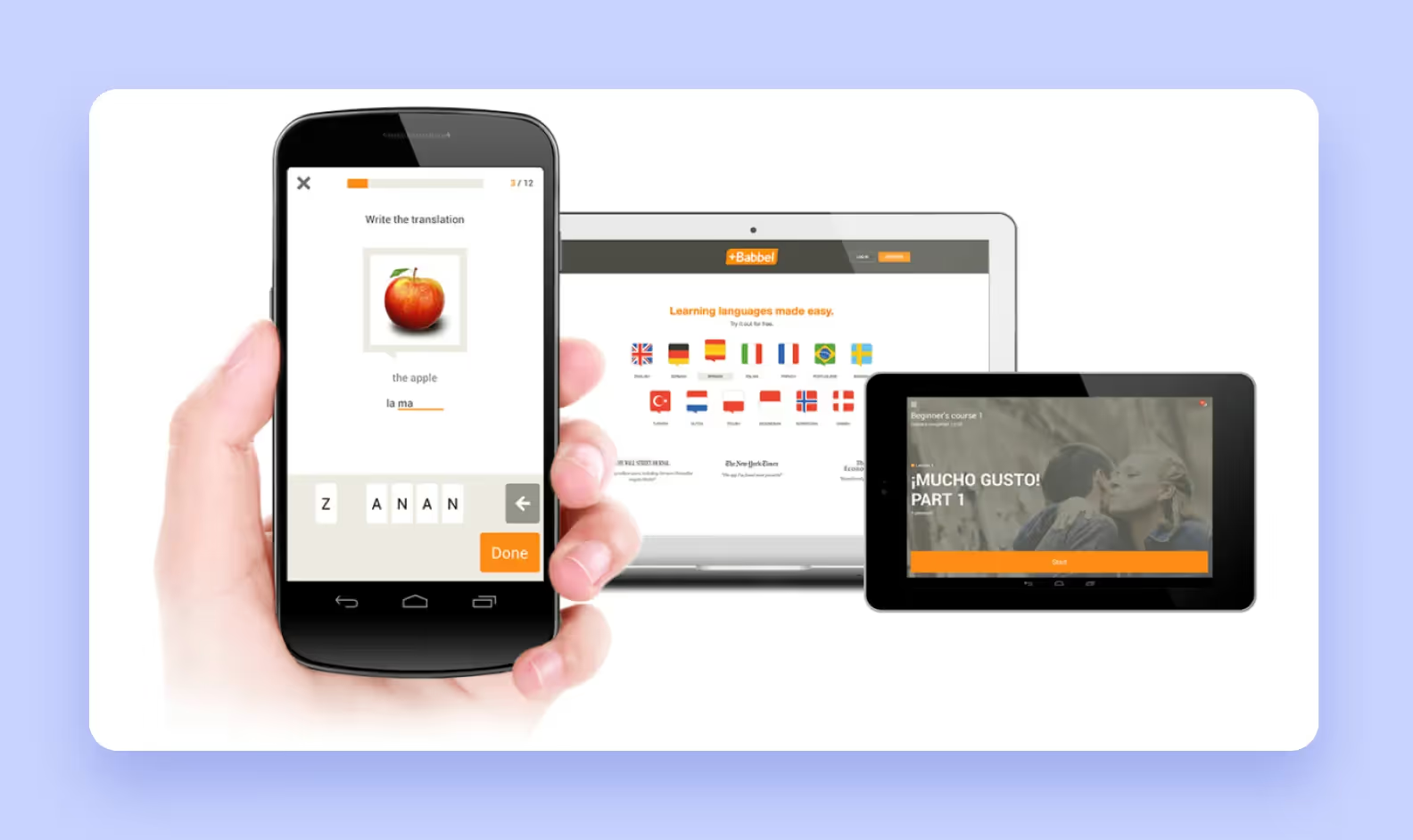
The best language learning apps include all these essential features and make sure they work well together. Take Duolingo's winning formula:
Combining these parts well means the result is a learning experience that is both fun and informative, which is exactly what anyone expects from a language learning app. The key is to implement them in a way that feels natural and supports your core learning methodology, rather than as a checklist of disconnected features.
Remember: The best language apps aren't just tools — they're engaging, effective learning companions that users want to return to again and again.
When you make your own language app, using AI and speech recognition is a smart move, not just an innovation. These technologies solve two fundamental challenges in language education: personalization and spoken fluency.
AI helps transform static content into a more adaptive learning journey. By analyzing each user’s performance, it can predict knowledge gaps and adjust the difficulty and focus of exercises to match the learner’s needs. This creates a dynamic experience that feels relevant and personal, keeping users motivated as they progress.
Speech recognition, on the other hand, supports the development of real-world speaking skills. It’s not just about repeating words — advanced tools now give real-time feedback on rhythm, intonation, and clarity. These elements are essential for building confidence in everyday conversations.
Duolingo offers a great example of how speech recognition can be integrated into the learning experience in a smooth and supportive way:

What makes Duolingo stand out is its focus on helping users be understood, not just on perfecting an accent. The feedback is gentle and encouraging, with “Try again” prompts that feel helpful rather than critical. This design makes speaking practice feel like a natural part of the lesson, not a stressful test — and that’s where its quiet brilliance lies.
Successful language learning app development goes beyond writing code; it also needs planning, attractive design, and an understanding of how humans learn new things. At Purrweb, we’ve refined our process over the years of developing educational apps, and we’re happy to share our approach. Whether you’re exploring ideas or ready to dive into development, our expertise can help guide you, or we can handle the heavy lifting for you.
Here’s how we approach the first crucial steps:
By the time we start writing code, we have already investigated the market to see what exists. Are there any techniques competitors are using that help them succeed? What things don’t they address well? Essentially, what matters most is what students are looking for.
To begin with this, check out and compare leading language apps such as Duolingo, Babbel, and Memrise. Find out the good and bad about them to figure out your unique approach. But if you’d rather skip the guesswork, our team can handle the research and strategy for you.
<div class="post_divider"></div>
⭐Our experience
Our discovery phase services help you validate your app idea, define key features, and map out a clear development roadmap — saving you time and budget by avoiding costly pivots later. Through market analysis and user flow mapping, we identify what truly matters to your audience.
For example, in the Journey Verse project, we worked with a client who wanted to launch a travel app. During the discovery phase, we analyzed competitor products, clarified the app’s target users and goals, and narrowed down the feature list to the essential MVP components. Instead of overbuilding, we focused on must-have functionality like trip planning, booking integration, and geolocation features.
As a result, the client was able to reduce development costs by 30% — without sacrificing user value or product quality.

<div class="post_divider"></div>
Even as the lessons become tougher, using the language learning app should feel easy and smooth. Our designers craft interfaces that guide users smoothly, whether they’re practicing grammar, recording pronunciation, or unlocking achievements. Our main priorities are:
<div class="post_divider"></div>
⭐Our experience
At this stage, it’s important to craft a UI kit for your app design to look harmonious. The kit is a set of visual components that make up an interface, such as the color and thickness of buttons.
For SOAK, we created a custom UI kit that reflects the app’s minimalist and calming aesthetic. We carefully defined a color palette with soft tones, selected modern typography, and designed unified button styles, form elements, and icons. Each component was built to match the brand’s visual identity and ensure a seamless user experience across all screens. As a result, every interface element feels connected — no visual noise, just clarity and balance.
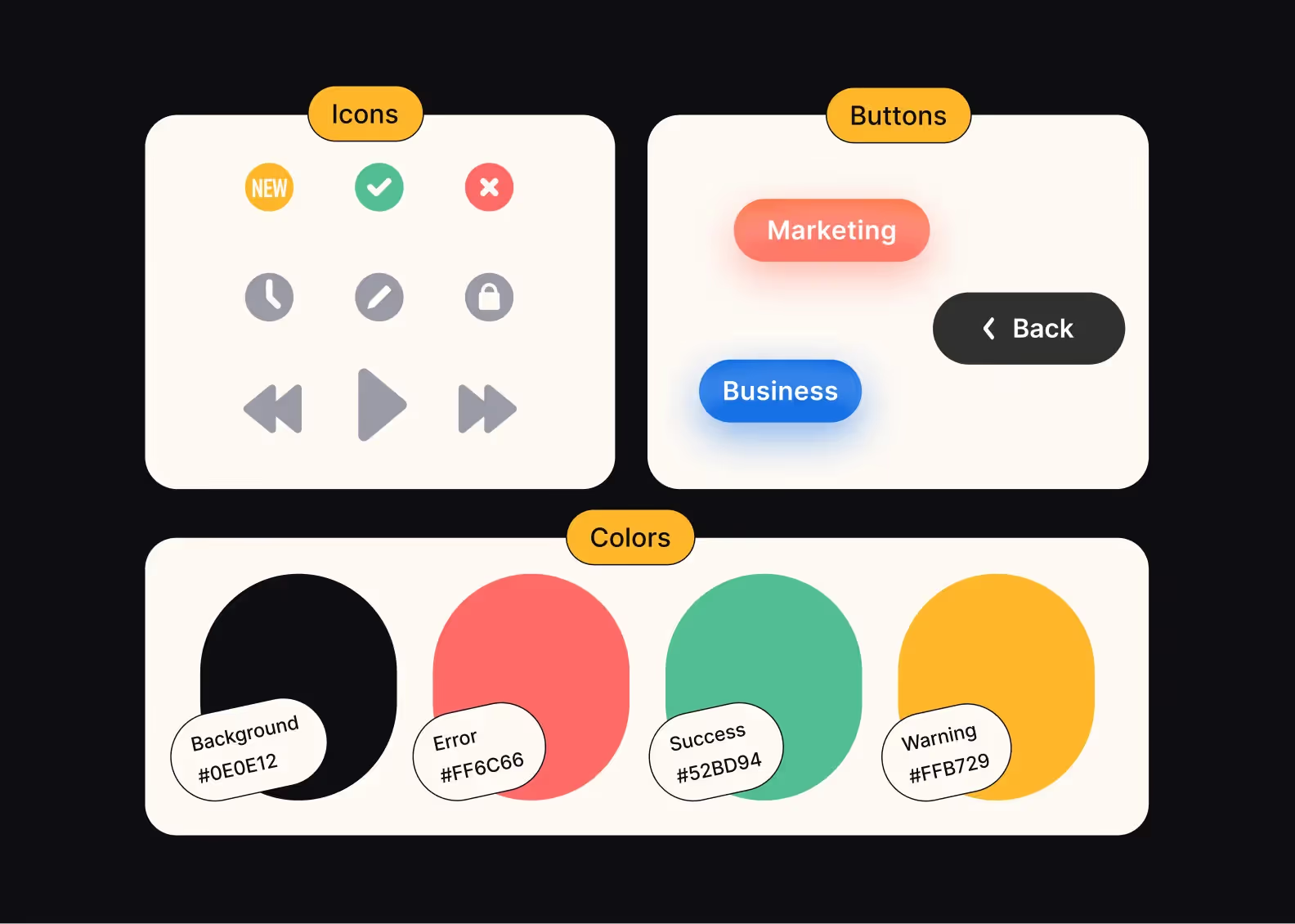
<div class="post_divider"></div>
We begin this step with wireframes, present them to real users for testing, and keep adjusting them until the experience seems natural. Using Figma or Adobe XD, or other similar tools, can help a lot if you’re working by yourself. However, make sure to get feedback at the start so you don’t have to change everything later.
A great language learning app isn’t just a dictionary with quizzes — it’s an interactive experience that keeps people coming back. At Purrweb, we focus on building the core features that make learning effective, engaging, and rewarding.
We start with user profiles and progress tracking. Learners are more likely to stick around when they can clearly see how far they’ve come. That’s why we implement dashboards showing learning streaks, completed lessons, mastered skills, and earned badges. These elements create a sense of achievement and help people visualize their journey.
Interactive exercises are the heart of engagement. Instead of just static content, we use a mix of flashcards, sentence construction, and quick quizzes to keep users involved. We often include lightweight gamification elements like unlocking new levels or collecting virtual coins. These little boosts give users extra motivation without distracting from the learning.
For apps that focus on speaking practice, speech recognition and pronunciation feedback are game-changers. We integrate APIs such as Google Speech-to-Text or Amazon Transcribe to let the app analyze how users pronounce words and phrases. The feedback is immediate, helping learners improve their pronunciation, rhythm, and clarity in real time.
Our tip: if you're building your app independently, start with one core learning feature. Choose between something like vocabulary drills or conversation-based practice. Trying to add everything from the start often results in longer development time and a messier user experience.
Unlike teams that leave testing to the very end, we bake it into every stage of development. This approach helps reduce unexpected bugs at launch and gives users a smoother experience from day one.
We conduct functional testing to check that every button, quiz, and audio component works as intended. We follow up with usability testing, making sure real users (not just developers!) can navigate the app easily. Finally, we perform performance testing to ensure smooth operation even on older devices or with slower internet connections.
Once the language learning app is stable, we launch a Minimum Viable Product (MVP) — a simplified version with only essential features. This allows us to test core ideas, validate demand, and gather real user feedback without investing too much upfront.

Launching your MVP is just the beginning — now it’s time to refine, expand, and keep learners engaged for the long haul. At Purrweb, we treat every app as a living project that grows with its users. Whether you're iterating on feedback or planning advanced features, here’s how you can create your own language app that stays ahead of the curve.
Once your core app is stable, you can start layering in smarter, more immersive experiences. Here’s what we often recommend (and build for our clients).
We often recommend AI-powered personalization. Instead of showing every user the same lessons, the app uses adaptive algorithms to adjust learning paths based on performance. If someone struggles with verb conjugations, the app offers more practice. If they’re breezing through vocabulary, it raises the difficulty level.
We also help integrate live tutoring and community features. Language learning is more effective when there’s a human element — whether it’s 1-on-1 video sessions (using tools like WebRTC or Zoom), peer challenges, or AI chatbots simulating conversations. These features keep learners motivated and make the experience feel more social.
Offline mode is another important upgrade. Not everyone has constant Wi-Fi access, especially while commuting or traveling. We ensure that learners can download lessons in advance and automatically sync their progress when they reconnect.
Our advice: Do not rush into advanced features prematurely. Use MVP data to prioritize what users actually want (e.g., if your analytics show high drop-off in speaking exercises, focus on improving those first).
Tech evolves, bugs sneak in, and user expectations rise. We offer ongoing support to:
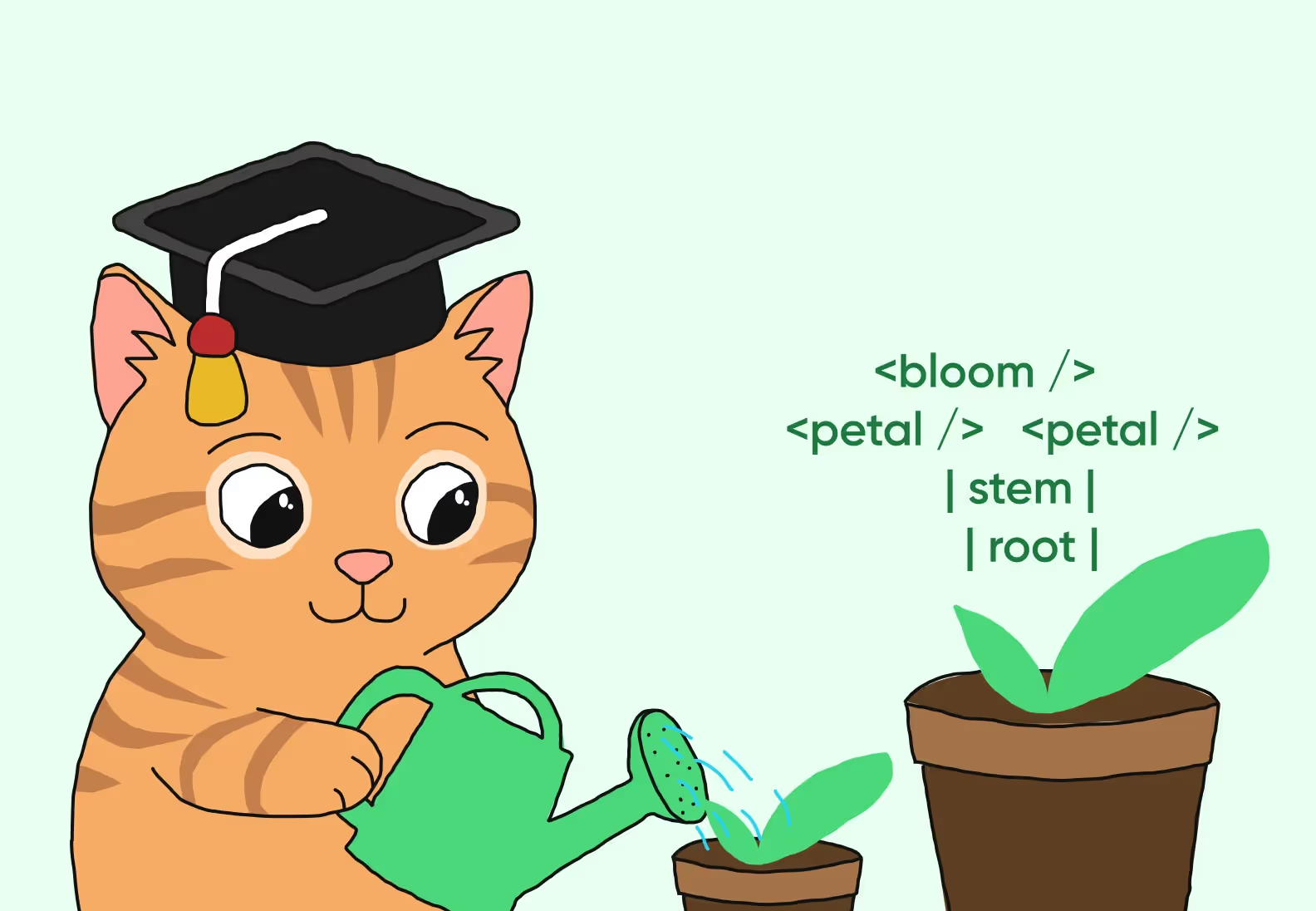
Building a successful language learning app isn't just about creating great educational content — it's about developing sustainable revenue streams that support your mission while delivering real value to users. The most profitable language apps combine multiple monetization approaches tailored to their specific audience and learning methodology.
Freemium remains the dominant monetization strategy for language learning apps — and for good reason. It lowers the barrier to entry while offering users a taste of what’s possible. The real art lies in striking the right balance between what’s free and what’s premium.
In the free version, users typically get access to basic vocabulary tools, introductory grammar lessons, and limited speaking exercises. This is enough to keep them engaged while giving them a clear sense of progress. As they advance and encounter limitations, the premium tier naturally becomes more appealing.
Paid subscriptions often unlock features like advanced pronunciation analysis, personalized learning paths, offline access, and an ad-free experience. These upgrades directly address user pain points, making the transition to paid plans feel like a logical next step rather than a hard sell.
A well-structured subscription model helps maximize both revenue and user satisfaction. Tiered pricing is especially effective, offering plans like Basic, Premium, and Family helps match different learning needs and budgets. You can also boost long-term commitment with annual discounts, making users more likely to stick around for the long haul.
Offering a 7- to 14-day free trial of premium features allows users to experience the full value before they commit financially. The key psychological driver here is perceived ongoing value: users stay subscribed when they feel they’re consistently gaining something useful.
Not all users want or need a subscription. That’s where in-app purchases come in — offering one-time options that let users tailor their experience. This model works particularly well for specialized content: professional terminology (like legal or medical), themed course packs (travel or exam prep), or add-ons like cultural immersion lessons and tutoring sessions.
The goal is to present these purchases as enhancements to the learning path, not as distractions or hard sells. If the extra content solves a real problem or adds something enjoyable, users are more likely to buy.
Ads can provide a steady revenue stream, but they must be handled with care. To maintain a good learning experience, keep ads relevant to education, such as language books, exchange programs, or online tutoring. Limit their frequency, especially during focused study sessions, and be transparent about their value. For instance, let users know they can unlock more content or features by watching an ad.
Beyond individual users, there’s strong potential in B2B markets. Schools can benefit from teacher dashboards and student tracking features, while companies may want versions of your app tailored to their industry-specific vocabulary needs. You can also offer white-label solutions — licensing your platform to other educational providers under their own branding.
This approach often results in larger contracts, recurring revenue, and greater app credibility.

Finally, don’t try to implement everything at once. Focus on the two most promising revenue channels early on, such as freemium and subscriptions, and gradually add others based on user behavior and demand. Your monetization model should evolve along with your audience.
Let’s be honest — creating a language app isn’t just another tech challenge. It’s about turning the complex process of human language acquisition into a digital experience. The biggest mistake? Assuming that if you build it, users will magically learn.
Instead, ask the hard questions early:
The best apps build learning loops that feel rewarding, where mastering each lesson feels like gaining a new superpower.
Cool features can quickly backfire without proper execution. Voice recognition might mishear basic phrases, personalization might feel repetitive, and AI tutors can feel stiff or irrelevant. These aren’t just bugs — they break trust with users.
The fix? Don’t just demo these features to your team. Test them with real beginners. See where they struggle, what confuses them, and what makes them smile. Good technology serves the learner, not the other way around.
Most language apps start strong with a handful of useful words, then coast. But real educational value comes from thoughtful content that grows with the user.
This means real voices instead of robotic text-to-speech, practical dialogues instead of awkward textbook examples, and cultural tips that help learners avoid embarrassing missteps. Partnering with experienced language teachers early can catch gaps your tech team might miss.
Here’s a hard truth: most users quit within the first month. That’s not because they don’t want to learn — it’s because the app doesn’t make progress feel rewarding or visible.
Great language learning apps motivate with progress indicators ("You now know 87% of restaurant vocabulary!") and friendly nudges ("Maria just passed you on the leaderboard!"). Think coach, not critic. Make it feel like someone’s always cheering them on.
Success brings new risks. An app that works great for 100 users might fall apart when 10,000 log in.
Be ready for spikes in demand. That includes slowdowns in speech recognition, lost progress due to weak database architecture, and — worst of all — user frustration. Build your stack to handle more than you think you’ll need.

It’s tempting to spend the entire budget on launch, but that leaves nothing for updates, new content, or ongoing marketing. That’s why many promising mobile apps fizzle out after version 1.0.
The smart approach? Start small, get feedback fast, and reinvest in what your users care about most.
The good news: Everything here is fixable. Every successful language learning app you know started with these same hurdles — and overcame them. The difference lies in planning for these challenges early, not reacting after they’ve already caused problems.
How much time does it normally take for an app language idea to reach the app stores? Every project is different, but most proceed through a common process. Let's walk through what you can realistically expect at each stage.
Every successful language learning app starts with a solid groundwork. Before any development begins, it’s essential to define your learning approach and user experience in detail. This includes finalizing your teaching methodology, designing the interface, preparing your feature set, and developing content for at least one language. Skipping this phase often leads to costly revisions later on.
With a clear plan in place, development of the Minimum Viable Product begins. This version should include the core functionality your app promises, such as lessons, exercises, and progress tracking, along with user profiles and support for one platform (iOS or Android). Keeping your initial scope focused, both in terms of features and languages, helps ensure faster delivery and a smoother testing phase.
A focused MVP typically includes:
After the MVP is released, the next stage involves layering in advanced functionality. You might add speech recognition for pronunciation practice, AI-driven personalization, gamification elements, and more language courses. At this point, many teams begin A/B testing new features to identify what truly boosts engagement.
Design also gets more attention — visual refinements, smoother interactions, and overall UX improvements that make the app feel polished and professional.
Post-launch is not the end — it’s the beginning of your app’s real journey. Regular updates keep users engaged and ensure your app remains compatible with evolving platforms and user expectations.
Ongoing work typically includes:
Several factors can speed up or slow down the entire app development process. A small team may take longer than a seasoned development agency. Supporting both Android and iOS at once requires more coordination. The complexity of your content, as well as integration with third-party services (like payment systems or speech APIs), also adds time to the schedule.
Most importantly, remember: the top language mobile apps treat development as a continuous cycle. Releasing a solid MVP quickly allows you to get real user feedback, iterate with purpose, and improve the product over time, rather than trying to build a “perfect” version before launch.
Launching a language learning app is just the beginning — the real challenge is getting it into the hands of eager learners. Effective marketing for language apps requires a strategic blend of digital tactics, community building, and authentic engagement. Here's how to create buzz and drive sustainable growth.
Your landing page is your app’s digital storefront — it needs to convert visitors into users. Start strong with a value proposition that addresses common learner pain points. Support it with a demo video, social proof (like testimonials and ratings), and a clear call to action such as “Start your free trial” or “Try a demo lesson.”
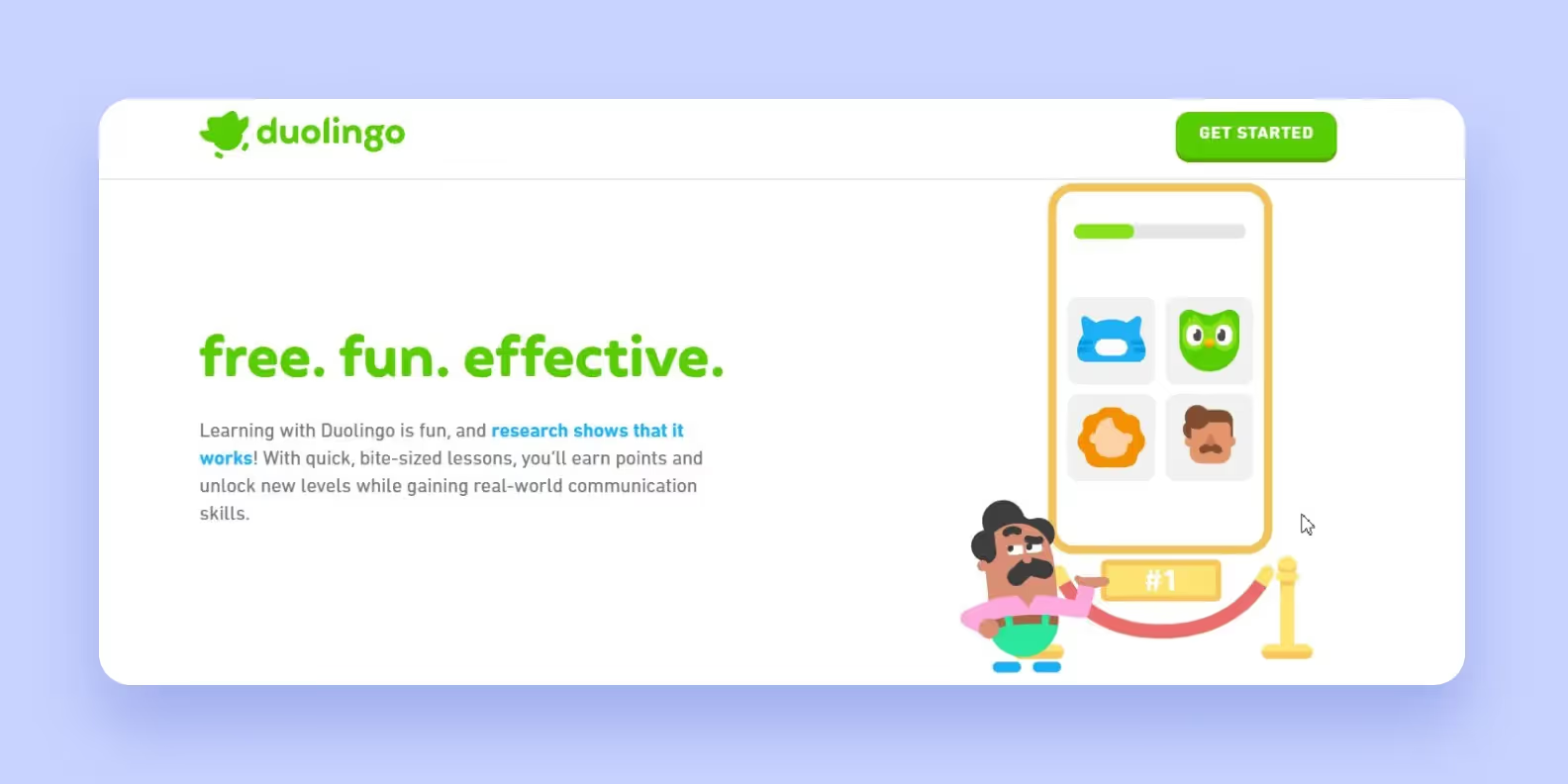
Great language learning apps don’t just sell — they educate. Sharing helpful content positions your app as a trusted learning companion.
Use fast formats like Instagram Reels or TikTok to show pronunciation tips and vocabulary challenges. For more depth, publish blog posts, e-books, or host webinars with language experts. This blend of quick wins and deeper insights helps reach learners at different stages of their journey.
Different platforms serve different roles, so tailor your messaging accordingly. Use visual channels like Instagram and TikTok to show real app use — short pronunciation clips, user testimonials, or “word of the day” series.
On community platforms like Facebook and Reddit, foster discussions, create private groups for your users, and encourage learners to share their stories. LinkedIn works well for connecting with educators and sharing insights into the language-learning industry.
Your top users are your best promoters. Build systems that encourage sharing — milestone celebrations, badges for achievements, and social media-ready progress updates.
Launch a referral program that gives meaningful rewards, like unlocking premium features or early access to new lessons. As your community matures, create real-time touchpoints: host webinars, organize online language exchanges, or even launch local meetups for cultural immersion.
The best marketing strategy is cohesive and learner-first. Begin with a strong landing page and ASO to create discoverability. Layer in educational content and community-building initiatives to drive deeper engagement.
Above all, make sure your marketing feels human and helpful. The more personal and valuable your message is, the more likely learners are to stay, grow, and bring others along for the journey.
So, how to build a language learning app? Success requires careful planning — from defining your educational approach to selecting the right tech stack and marketing strategy. Start with a focused MVP, prioritize engaging content, and use iterative development to refine based on real user feedback.
Challenges like speech recognition, retention, and scaling can be overcome with smart planning and phased rollouts. Monetization works best when aligned with learner value, whether through subscriptions, in-app purchases, or premium content.
The key? Start small, learn fast, and scale wisely.
👉 Want to build a language learning app with us?
At Purrweb, we’ve helped dozens of edtech startups go from idea to launch — and we’d love to support your journey too! <a class="blog-modal_opener">Drop us a message</a>, and we’ll be in contact within 24 hours.